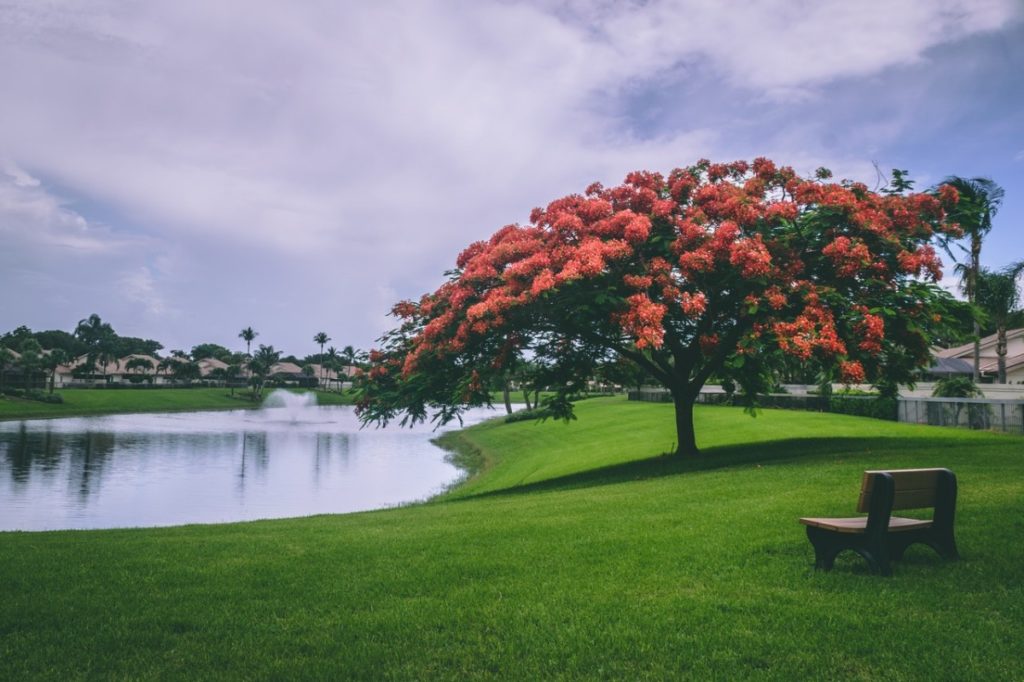Landscaping is usually tied to residential properties, but it’s just as essential in commercial properties. Curb appeal matters in business too. Without it, your storefront will look dull and uninviting.
While not all commercial establishments need landscaping, all of them need at least a semblance of a garden. Two tall plants flanking the entrance, for example. The presence of greenery instantly makes the premises welcoming and warm.
If you own a commercial building, then that’s another story. Just because work-from-home is the norm nowadays doesn’t mean landscaping has become optional. As the world slowly transitions back to the normal we’re used to, offices and restaurants, and shops will reopen and welcome back an influx of people. So surprise them with a lush and lively garden.
But before taking out your gardening tools, consider if you’re treating your commercial landscape right. If the area is a result of your DIY efforts, you might’ve made some of these common commercial landscaping mistakes:
1. The Design Wasn’t Planned
Because of expensive professional services, many people turn to DIY solutions, even for services such as landscaping. But if you didn’t know what you were doing, chances are you just winged the design and hoped that the thriving plants will make up for the lack of a plan. But skipping the planning stage is a recipe for failure.
You don’t need a master plan to perfect your commercial landscape. If your property is small, just sketch out the space, then play around with ideas using that sketch as a base. What would look good in that bare corner? Should you fill the center? Sketching the space allows you to visualize if your design ideas are going to work.
2. Overwatering
The sprinklers don’t have to be turned on every day. Aside from increasing your water bill, it also drowns your plants and shortens their lives. Running the sprinkler only once a week is good enough for most landscape gardens. Some plants barely even require water. And of course, during the monsoon season, you may not even need to turn on your sprinklers at all.
3. Planting Green Plants Only
Although green plants make landscapes cleaner-looking and more streamlined, the absence of colorful plants can make the greenery look overwhelming. There are many all-year-round flowers that can grace your commercial property beautifully, and allow the eye to take a break from all the greens.
Popular all-year-round flowers include petunia, sweet pea, sunflower, and begonia. Adorn the shrubs with any of those blooms, and your landscape will attract more attention, which could help your tenants gain more notice.

4. Skipping the Landscape Rocks
For huge commercial landscapes, decorative rock boulders are a must-have to make the area achieve a sense of completion. These rocks can serve multiple purposes; they can act as both a retaining wall and an aesthetic feature. If your landscape is situated at the foot of sloping land, you definitely need the rocks.
There are many ways to spruce up a landscape with rocks. Smooth, pale-colored stones can replace mulch so that they’d emit a striking contrast against your deep-colored foliage. If a french drain is installed in the landscape, conceal it using pebbles to disguise it as an appealing feature. Larger rocks can be used as pavers or water feature adornments. If your landscape has an Asian design, the rocks can create a Zen atmosphere.
Landscape rocks can also discourage weed growth, which often occurs on bare soil. If you didn’t know, weeds steal your plants’ nutrients, making their colors fade and their bushes thinner. If your plants are looking dull for no apparent reason, check the ground for weeds, and remove them immediately if they’re present.
5. Planting Too Much
A landscape’s beauty doesn’t depend on how many plants it holds. In fact, overcrowding the space with plants can deliver an effect opposite of what you’re hoping for. Less is more also applies in landscape designing.
To know which spot in the landscape will benefit from having the most plants, sketch out the space again. Find the spot that customers can see from all angles. That would be the focal point. Concentrate your most sophisticated decorations on that area. Consider putting down some garden seats, a shade, or a water feature. Make the area inviting and free of bugs and litter. Your tenants, their employees, and your employees can use that space to unwind after hours of dealing with customers and other tasks.
Commercial landscaping may be more critical than residential landscaping since it can benefit all occupants of a building, be it administrators, tenants, customers, and the public. When it’s open for everyone, people who just got off work can rest in the space, take photos, and just feel good. The landscape boosts the appeal of the whole property, bringing in interested customers and lots of positive feedback.
